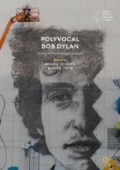Abstract
Katherine Weiss’s chapter addresses the ways both Dylan and Sam Shepard work to destabilize American myths while insisting upon the very necessity of such myths—in the form of masks, or always mutating performances. By focusing specifically on Shepard’s relationship with and effort to understand him, Weiss reveals the significance of Dylan’s protean nature (as it relates to America’s tendency to get trapped in, or to reify, its necessary myths). At the same time, she shows how Dylan and Shepard collaborated to break down outmoded myths by resurrecting, necessarily, new, albeit more temporary, unstable, performative ones—especially in their interrogation of the concept of American identity. Weiss draws particular attention to Shepard and Dylan’s collaboration on the song “Brownsville Girl” (1986).
Access this chapter
Tax calculation will be finalised at checkout
Purchases are for personal use only
Notes
- 1.
Renaldo and Clara (1978), a four-hour film which includes footage of the tour, was written and directed by Dylan. This film stars Dylan, Joan Baez, Harry Dean Stanton (who played the father in the film adaptation of Shepard’s 1981 play Fool for Love) and Sam Shepard.
- 2.
I’m using this term to allude to both Shepard’s 1971 play Cowboy Mouth and his 1972 play The Tooth of Crime . Both feature musician-types and in both violence and survival make up a large part of the characters’ struggles.
- 3.
Shepard moved to London in 1971 to escape the Vietnam War. Despite fleeing the painful unrest in America during this time, Shepard’s thoughts turned to his homeland. Prior to his move to England, his plays were deracinated. Once in London plays, such as The Tooth of Crime (1972) and Geography of a Horse Dreamer (1974), bare the mark of his nationality.
- 4.
See Damian Carpenter’s (2017) work on Dylan’s performance of the honest outlaw (195–206) especially.
- 5.
This is not to say that Dylan took the cause lightly. Marcus (1997) explains that Dylan understood “moral, generational, and racial divisions” as rooted in “Americans defining themselves not as who they were but as who they were not” (8).
- 6.
The lyrics of “John Wesley Harding ” depict another story of injustice. Here, a man who always lent a “helping hand” and never made a “foolish move” winds up the victim of a younger gunman’s desire for fame.
- 7.
Damian Carpenter’s (2017) chapter on Dylan is essential reading for anyone interested in Dylan and the outlaw.
- 8.
Brownsville, Texas (also known as Little Mexico), is a US-Mexican border city. It is not uncommon for residents in Brownsville to travel into Matamoros, Mexico, despite the dangers, to obtain inexpensive pharmaceuticals and medical treatments.
- 9.
Shepard is in love with the myth of the American family, but repeatedly reveals that family life is plagued with the same type of violence which America was founded on. For an excellent discussion of the American dream, family and violence, see Shepard’s interview (2002b) with Matthew Roudané.
- 10.
Rather than finding an old, free democracy in American history and folklore, what Dylan discovers is that such claims are reached by mistake (Marcus 1997, 89).
- 11.
Marcus (1997) recalls a similar episode in his description of Dylan’s 1966 London concert. Captured partially on the Basement tapes, the London crowd violently shouted, “TRAITOR. SELL-OUT. MOTHERFUCKER. YOU’RE NOT BOB DYLAN” (7).
- 12.
For more on the significance of masks and Dylan, see Marcus (1997).
References
Bottoms, Stephen J. 1998. The Theatre of Sam Shepard: States of Crisis. Cambridge: Cambridge University Press.
Carpenter, Damian. 2017. Lead Belly, Woody Guthrie, Bob Dylan and American Folk Outlaw Performance. Abingdon: Routledge.
de Castro, Jesús Lerate. 1997. Hoss vs. Crow: A Shoot-Out between Modernism and Postmodernism in Sam Shepard’s The Tooth of Crime (and Its Sequel in ‘Brownsville Girl’). In Letras en el espejo: Ensayos de literatura americana comparada, ed. Alvarez Maurin et al., 125–134. León, Spain: Universidad de León.
Dylan, Bob. 2004. Chronicles: Volume One. New York: Simon and Schuster.
Edel, Uli, dir. 1999. Purgatory. Turner.
Haynes, Todd, dir. 2007. I’m Not There. Weinstein.
Heylin, Clinton. 2010. Sill on the Road: The Songs of Bob Dylan, 1974–2006. Chicago: Chicago Review Press.
King, Henry, dir. 1950. The Gunfighter. 20th Century Fox.
Marcus, Greil. 1997. The Old, Weird America. New York: Picador.
Peckinpah, Sam, dir. 1973. Pat Garrett and Billy the Kid. Warner Brothers.
Sam Shepard: Stalking Himself. 1998. Great Performances. PBS.
Shepard, Sam. 1984. Fool for Love and Other Plays. New York: Bantam Books.
———. 1986. The Rolling Stone Interview: Sam Shepard. By Jonathan Cott. Rolling Stone, December 18, 1986.
———. 1987. True Dylan: A One-Act Play as it Really Happened One Afternoon in California. Esquire Magazine, July 1, 1987.
———. 1988. “Sam Shepard” Geography of a Horse Dreamer. By Kevin Sessums. Interview, September 1988: 70–79.
———. 1996. Opuestos. In Cruising Paradise, 199–204. New York: Vintage.
———. 2002a. The Late Henry Moss. In Three Plays: The Late Henry Moss, Eyes for Consuela, When the World was Green. New York: Vintage.
———. 2002b. Shepard on Shepard: An Interview. By Matthew Roudané. In The Cambridge Companion to Sam Shepard, ed. Matthew Roudané, 64–80. Cambridge: Cambridge University Press.
———. 2004. The Rolling Thunder Logbook. Cambridge, MA: Da Capo.
———. 2005. The God of Hell. New York: Vintage.
———. 2006. Tooth of Crime (Second Dance). New York: Vintage.
Shewey, Don. 1997. Sam Shepard. New York: Da Capo.
Author information
Authors and Affiliations
Editor information
Editors and Affiliations
Rights and permissions
Copyright information
© 2019 The Author(s)
About this chapter
Cite this chapter
Weiss, K. (2019). “Blowin’ in the Wind”: Bob Dylan, Sam Shepard and the Question of American Identity. In: Otiono, N., Toth, J. (eds) Polyvocal Bob Dylan. Palgrave Studies in Music and Literature. Palgrave Macmillan, Cham. https://doi.org/10.1007/978-3-030-17042-4_6
Download citation
DOI: https://doi.org/10.1007/978-3-030-17042-4_6
Published:
Publisher Name: Palgrave Macmillan, Cham
Print ISBN: 978-3-030-17041-7
Online ISBN: 978-3-030-17042-4
eBook Packages: Literature, Cultural and Media StudiesLiterature, Cultural and Media Studies (R0)

